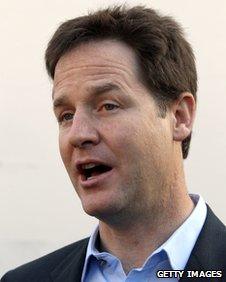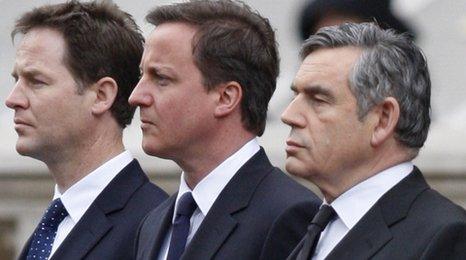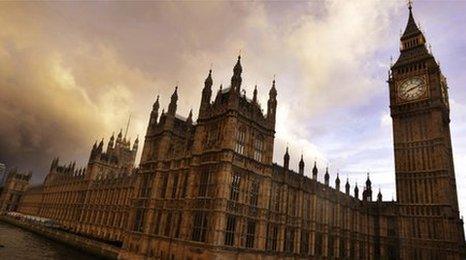Price of power: What Nick Clegg wants
- Published

The Lib Dems the voting system to based on proportional representation
Before the government was formed, The Liberal Democrats held talks with both Labour and the Conservatives about forming a coalition government.
In return for their support, the Lib Dems wanted changes to the UK voting system.
They don't like the current set up where the person with most votes in a constituency takes the prize and everyone else gets nothing.
Their dream is proportional representation with MPs in the House of Commons more closely representing the different parties people voted for.
Single Transferable Vote (STV): What the Lib Dems really want
Instead of just selecting one MP for a single constituency, voters have to choose several MPs to represent a bigger area.
There's no more putting a cross in a box.
Under STV, voters rate their favourite candidates: one, two, three, four, etc.
Once a candidate reaches a certain share of first places, they become elected.
If they get more votes than they need, those ballot papers go back into the pool to help decide the second MP.
The mathematics of calculating STV elections are very complicated.
Smaller parties like the Lib Dems and Greens stand a better chance of getting elected under this system.
Critics say it breaks the connection between local people and their MP and it confuses voters.
STV is used in Scotland for council elections.
Alternative Vote (AV): What the Conservatives and Labour are offering
It's not that different to the existing system and for the Lib Dems, AV would be a compromise.
Voters rank the candidates in order of preference: one, two, three, four, five, etc.
If one candidate gets a majority (more than half the vote) they become MP.
If they fail to reach a majority, the bottom placed candidate is eliminated and their choices are divided up.
This keeps happening until one candidate reaches a majority.
Additional Vote keeps the existing constituencies with one MP for each.
The candidate chosen to be MP is the one with most support overall.
Critics say AV doesn't represent the different parties any better than the current system.
Alternative Vote is used to elect the Australian House of Representatives.
- Published10 May 2010

- Published5 May 2010
